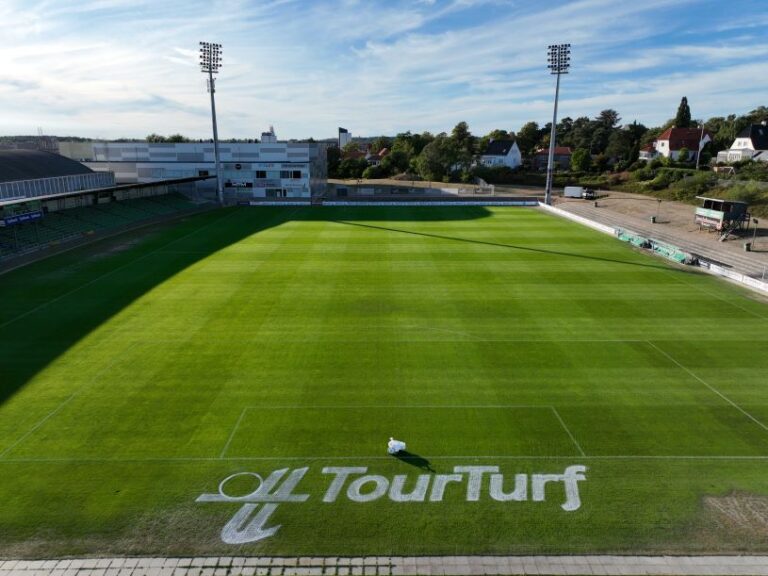By Robert Augsdorfer
With some sports field management crews running with just a few people or requiring crewmembers to perform other tasks around the grounds, someone, or something, needs to take care of field painting/line marking — or even mowing. As a result, robotic equipment has risen in popularity during the last few years, and sports field managers are increasingly deploying automated help in the form of robotic field painters/line markers and robotic mowers.
According to Jason Connor, director of commercial robotics at Husqvarna, robotics offer flexibility for field managers with skeleton crews.
“With limited labor supply, robots offer flexibility in labor allocation,” said Connor. “Sports field managers can use their labor for tasks that are often overlooked or de-prioritized. With robots, sports field managers will also notice reduced wear and tear on the turf from heavy equipment and a quality of cut that is excellent and equal to, or better than, what they’ve experienced with traditional mowing. Additionally, sports field managers can customize the cut direction and cut pattern easily with robotic mowers.”
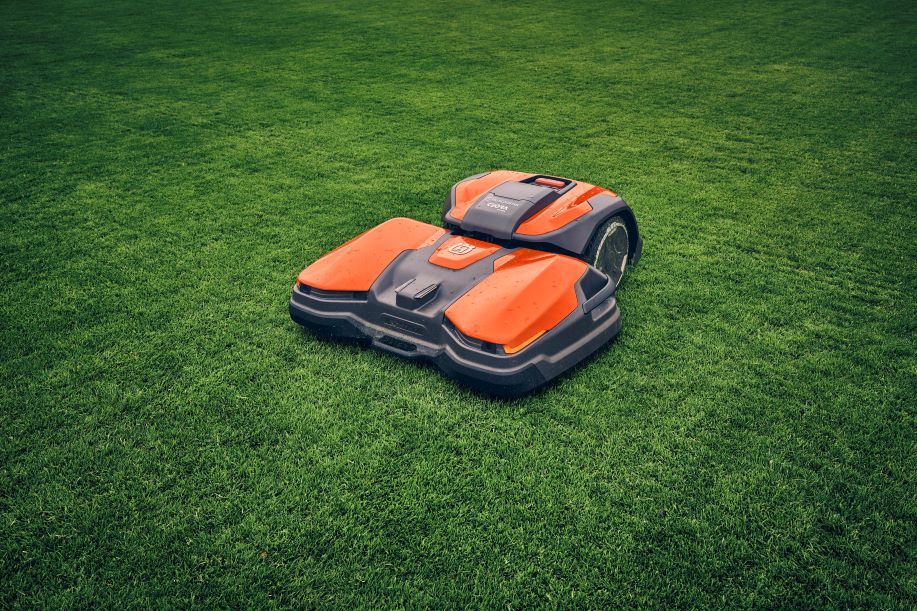
Drew Carl, director of marketing for TinyMobileRobots, a developer of robotic field painters/line markers, said that sports field managers are turning to robotic equipment to save time and resources.
“Robots usually can paint a field – either for the first time or restriping it – in about 50 percent of the time it would take an individual to do it,” said Carl. “For example, a soccer field can be painted in about 30 minutes with a robot. It also saves a lot in paint. The robot typically saves 50 percent or more in paint just because it paints the field more evenly and consistently.”
TinyMobileRobots started out with surveying in Europe and found a niche in the sports field market. The company recently started production in North America with two models.
“We have two different models with the Sport, which is our smaller base model, and the Pro X, which is a little more robust,” said Carl. “We can paint all kinds of fields, ranging from soccer to American football, Gaelic sports and field events for track meets. Baseball and softball will be big for us with the spring and summer coming up.”
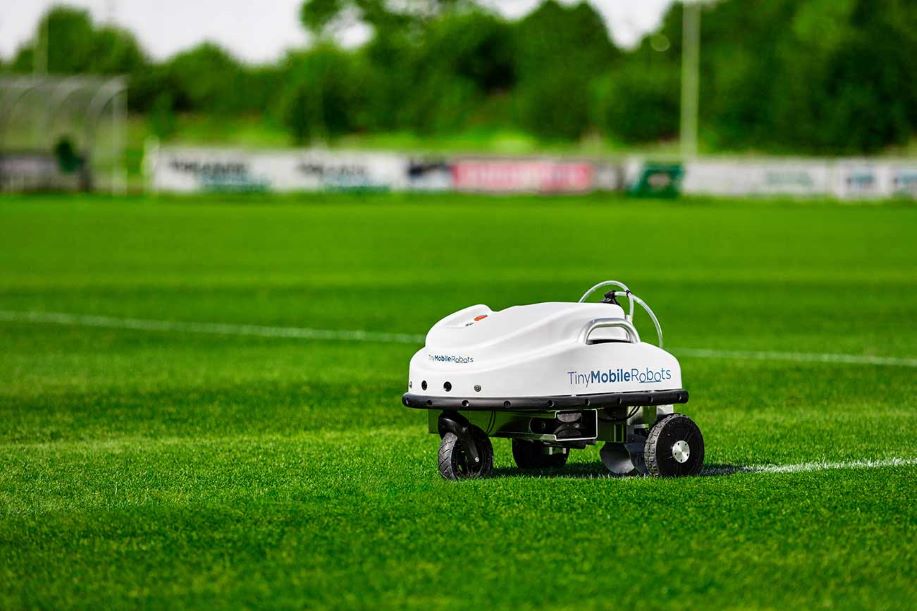
According to Carl, the robotics market has only just begun to scratch the surface in the sports field management industry. In addition to line marking, robotic field painters can perform more advanced work such as painting logos onto the field.
“We’ve had quite a few private sport clubs use our products as a revenue generator,” said Carl. “They’ll go out and get sponsorships from local businesses and paint their logos on their field. But people can use the robots to paint their midfield logos or paint ‘Home’ and ‘Away’ next to the team benches and different things like that. It’s pretty easy once the template is loaded into the unit, and the robot knows where to put it using the tablet that comes with it.”
According to Jesse Pritchard, sports turf and grounds manager at University of Virginia, who utilizes a Turf Tank field painter, robotics have helped alleviate staffing and personnel issues.
“Before, it could take a crew of four guys six to eight hours to get these fields painted, pulling strings, pulling out stencils. Early in the season, when the bermudagrass is growing extremely fast, we’re painting the fields twice a week,” said Pritchard. “Now, myself or one of my employees can come down here and these two practice football fields can be painted in six hours. Done completely. Perfectly straight lines.”
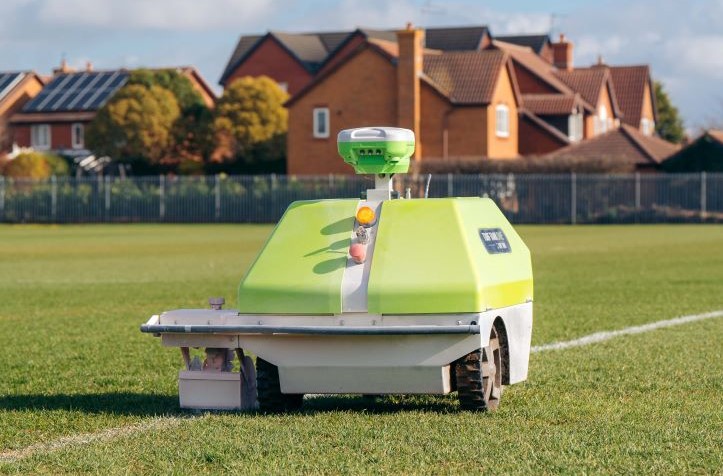
While the robot takes care of the fields, the rest of the crew is free to focus their attention on other tasks around the site and ensure the facility reaches the desired standard.
The Turf Tank One autonomous line-marking robot is controlled with the help of a tablet, and the company recently launched next-generation line-marking software that enhances the robot’s usability and efficiency.
The updated software provides sports field managers with greater flexibility and complete control over every aspect of the line-marking process. The Turf Tank robot is also capable of creating texts and logos so sports organizations can enhance their fields. Previously, only large colleges and professional teams could afford this feature, but now small sports clubs and high schools can provide their fans with an exceptional sports experience.
According to Turf Tank, robots not only reduce the time and physical effort spent marking fields, but are now a tool for attracting and retaining employes. As a result, this leads to more sustainable jobs in the sports field management industry.
The adoption and acceptance of robotic field painters by sports field managers also seems to have had a positive impact on the acceptance of robotics and autonomous technologies in general. Husqvarna has high-profile clients for its CEORA robotic mowers with the Louisville Bats (Triple-A affiliate of the Cincinnati Reds) as well as historic Fenway Park.
“As an industry, we’re still early in the adoption process to have clear trends emerging with the technology,” said Connor. “But momentum and interest are building at a rapid rate. The adoption of line painters has absolutely helped create additional early adopters for robotic mowers. If we visit a company using robotic line painters, we know they’ve already got a robotics mentality. They understand how robots work and interact on their properties, so it’s less of a leap for them to envision robotic mowers on their properties too.”
According to Brian Manke, product manager at Stihl product, developer of iMow, robotic mowers generate significantly less dust than a traditional mower, return nutrients and moisture back to the soil for healthier turfgrass, and are beneficial for air quality and those with allergies.
“Grass will be greener and healthier due to regular mowing,” he added.
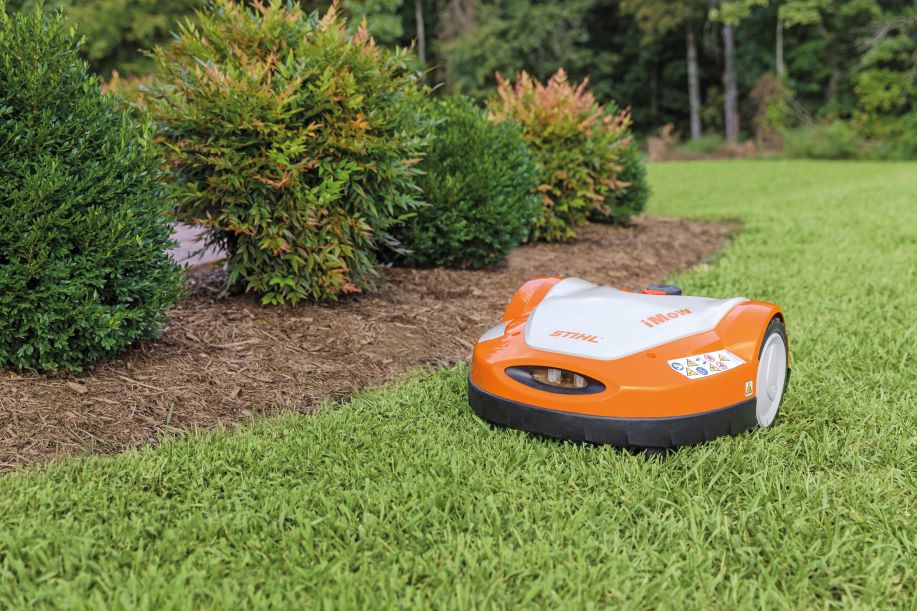
Overall, manufacturers are seeing higher adoption on the part of sports field managers as awareness spreads regarding the benefits of using robotics.
“I think the main thing is to get out there and be known in the industry,” said Carl. “A lot of times when we pitch our products, they didn’t know such a thing existed. So, we’re getting awareness and it works out for parks and schools that just have a tough time finding labor to do the work on their fields. We’re not saying that we’ll be replacing labor, but we can help in that a field manager can program the robot to paint the field and still get other things done.”
Added Connor, “Interest in robotics is accelerating, and more conversations around how to adopt these tools are taking place.”
Robert Augsdorfer is assistant editor of SportsField Management magazine.


